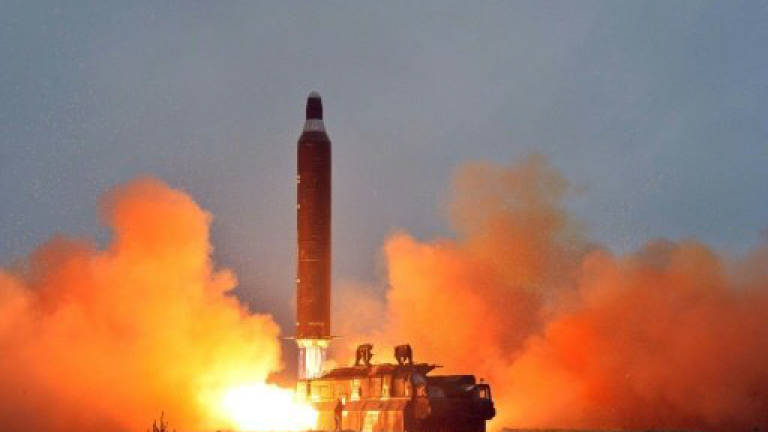Missile test could give N. Korea ICBM by 2020

SEOUL: North Korea's test of a new medium-range missile could help the nuclear-armed state develop an operational intercontinental ballistic missile (ICBM) capable of striking the US mainland by 2020, a US think-tank said Friday.
The US-Korea Institute at Johns Hopkins University said Wednesday's test of a so-called Musudan missile was a "partial success" that demonstrated the full performance of the weapon's propulsion system, and "at least a minimally functional" guidance system.
The Musudan has a theoretical range of anywhere between 2,500 and 4,000km, with the upper estimate covering US military bases as far away as Guam.
After a string of four failed launches in previous months, North Korea tested two Musudans just hours apart on Wednesday.
The first was seen as a failure, but the second was hailed by leader Kim Jong-Un as a complete success and proof of the North's ability to strike US bases across the Pacific.
The second missile was fired at an unusually elevated angle to attain a maximum height of between 1,000 and 1,500 kilometres — restricting its horizontal range to just 400 kilometres.
Experts said the unusual trajectory was chosen to give the engine a full workout while avoiding any provocative overflight of a neighbouring country like Japan.
Writing on the US-Korea Institute's website 38 North, aerospace engineer John Schilling said testing six Musudans in quick succession until one of them finally worked suggested the North's main target was a propaganda victory.
"This isn't so much an engineering programme, so much as an exercise in tossing a coin or rolling a die until it comes up with the result they like," he said.
As a result, and despite the relative success of Wednesday's launch the Musudan cannot be considered a "reliable" weapon, Schilling said.
"But even if this is just a propaganda stunt and the Musudan is to be quietly abandoned, this partial success increases the likelihood that North Korea's KN-08 and KN-14 road-mobile ICBMs will reach operational status early in the next decade," he warned.
Both ICBMs use the same ex-Soviet engine as the Musudan, but in a clustered and multi-stage configuration capable of reaching much of the US mainland.
While neither missile has been flight tested, Wednesday's Musudan test would provide valuable data for scientists working on the longer-range engines.
"Regardless of the ultimate fate of the Musudan, the credibility of the road-mobile ICBMs has increased a few notches," Schilling said.
"We still don't expect them to have those missiles operational before 2020, but early flight testing by that date is increasingly likely," he added. — AFP